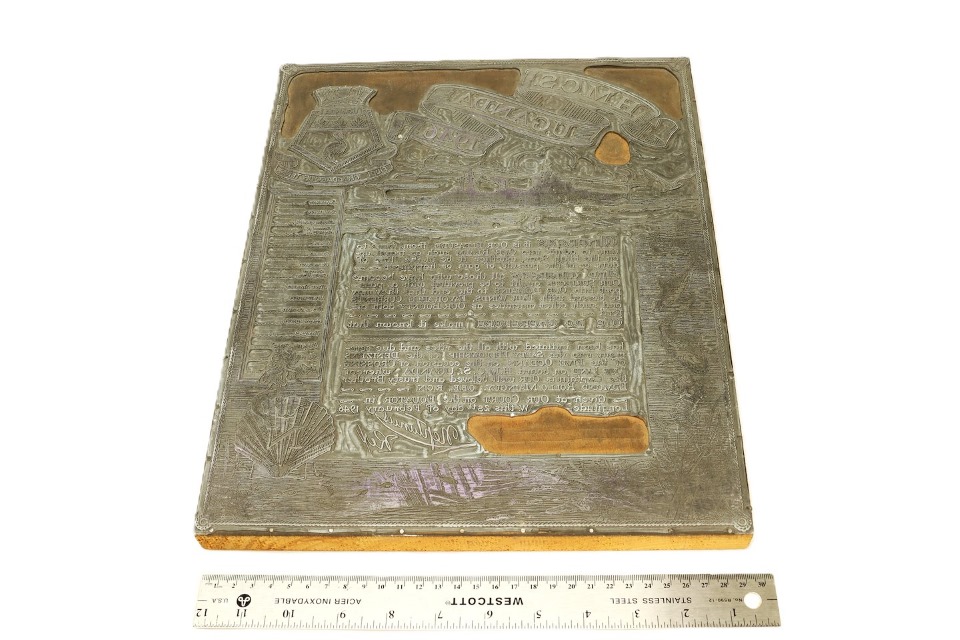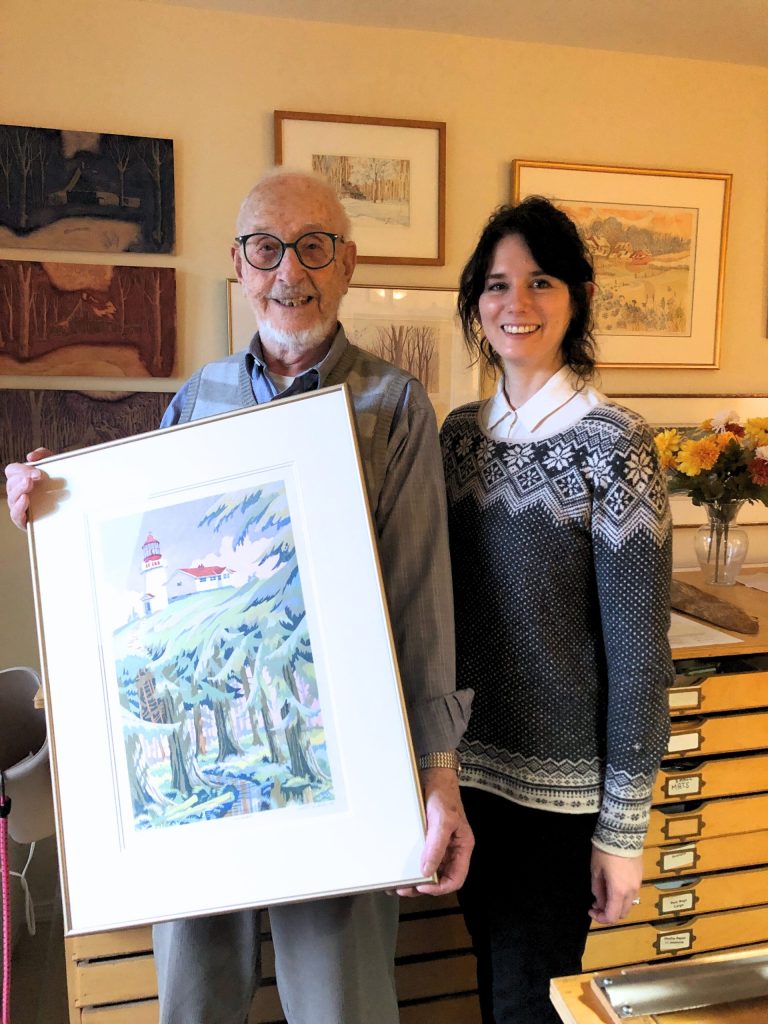
What are Collection Connections?
Have you ever looked at one of our programs and thought to yourself, “That looks interesting, but what does that have to do with maritime history?” All our programs at the Maritime Museum of British Columbia are inspired by the artefacts and stories held in our collections.
Feature Program: Linocut & Fabric Printmaking
This week’s topic is relief printing! We have two programs, linocut, and fabric printmaking, which use relief printing techniques. Linocut is one of our free Salty Sunday programs. Come by a carve a stamp, then use it to make cards, bookmarks and more! At a Fabric Printmaking workshop, participants will carve a linoleum block with their own unique design, then use it to print a tea towel or tote bag. Our printmaking workshops are based on medium that is centuries old. Relief printing is the umbrella term for any printmaking process where material is cut away from a block, leaving a raised surface that is inked then pressed to create the design.
Relief printing has been around since the 5th Century, C.E. Some of the earliest prints are from China, and were made using wood blocks. In Japan, woodcut was used as early as the 8th century, C.E. to print Buddhist texts. During the Edo period (1615-1868) this was a popular medium. Many famous works of art were created, including “The Great Wave” by Katsushika Hokusai. Woodblock printing gained popularity in Europe around the 14th century, as paper became more accessible.
If you visit us for a workshop, you will learn the basics of linocut. This technique was developed in early 20th century. Many people critiqued the medium. They argued that it was too easy and did not require much technical skill. In the 1950’s, Henri Matisse and Pablo Picasso popularized the technique when they began to use linocut in their artwork.
From the Collection

MMBC Archives Plate, Relief – HMCS Uganada 1946, MMBC Collection, 1404N
This lead plate from our collection was used to print commemorative certificates. Ink would have been applied to the raised surfaces. Then the block would be pressed onto paper. One of the benefits of relief printing is that once a block is made, it can be re-used many times.

Artist Graham Scholes and Collections and Exhibits Manager Heather Feeney in Scholes’ studio. Image courtesy of the Maritime Museum of BC.
In 2024, The Maritime Museum of British Columbia received a full set of 41 woodblock prints by Graham Scholes. This July we received the latest print, completing the series. Scholes is inspired by the lighthouses along BC’s coast. He uses the Japanese style of woodblock printing, called Mokuhanga, to capture the historic buildings and their environment.
Our Linocut and Fabric Printmaking workshops are based on a centuries-old technique – relief printing! Learn about the history, and see a relief print block from our collection, in this episode of Collection Connections. If you want to try out this medium, check out one of our programs.
Salty Sundays- Carve a stamp, and print bookmarks and cards. This program is drop-in and free with admission. Join us this Sunday, August 10th, from 2-4PM!
Fabric Printmaking Workshop- Carve a linoleum block, then print a tea towel or tote bag with a unique design. Register on our website!
Images and artefacts (in order of appearance):
Hokusai, Katsushika. “Under the Wave off Kanagawa.” Ca. 1830–32, woodblock print; ink and color on paper. Metropolitan Museum of Art, New York; Scholes, Graham. “Carmanah.” Image courtesy of artist’s website. https://woodblockart.ca/west-coast-gallery; MMBC #Collections 1404N; Image courtesy of the Maritime Museum of BC.
What’s Next?
There’s more to do and see every day at the MMBC–check out the links to the right for your next maritime adventure.



